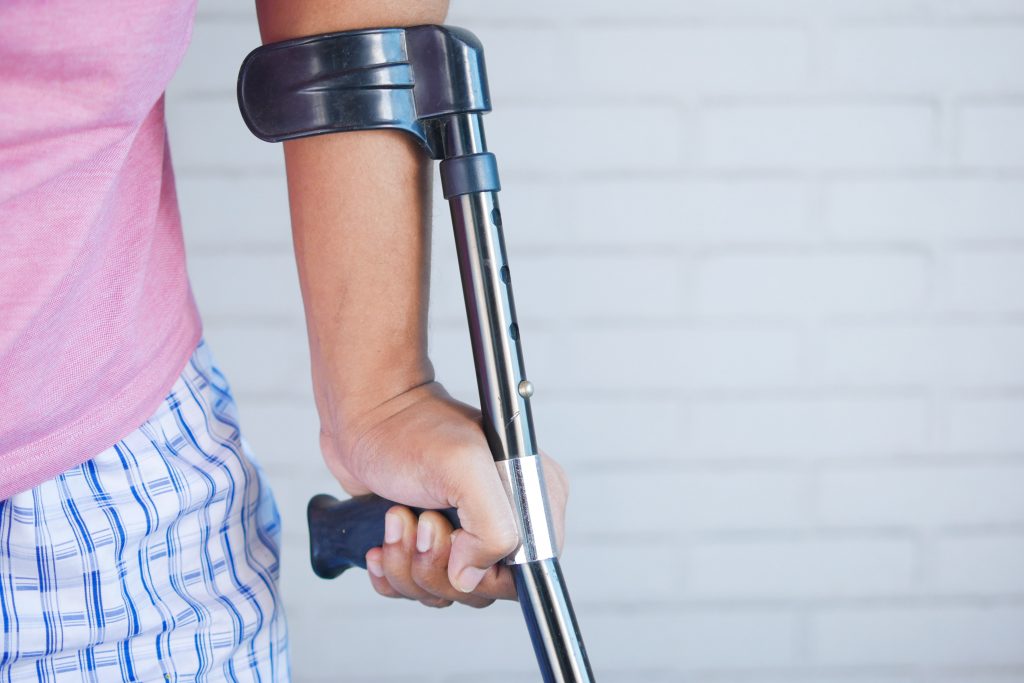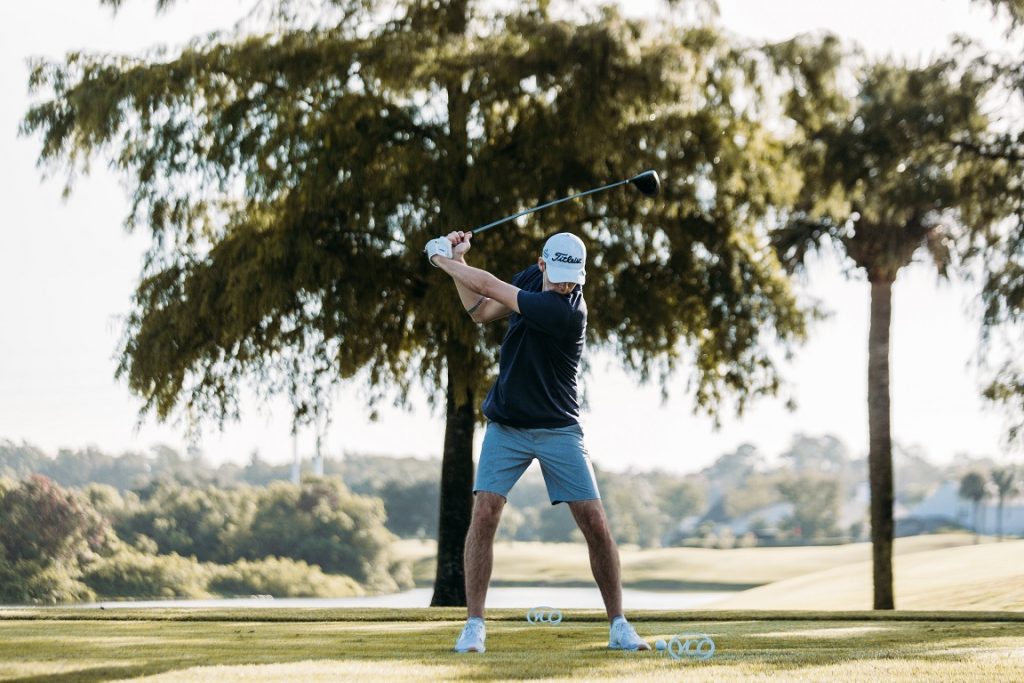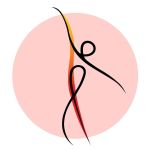Use the Meridians to Find True Healing for Old Injuries
Injuries are a part of life and – most of the time – they follow a predictable trajectory. You get injured, you rest or seek out care, and your body heals. You may be in pain for a few days or even weeks, but eventually, your symptoms go away and you return to your normal routine.
But what about the injuries that never seem to completely heal?
Can an old injury cause problems years later?
You may not even recognize that your current problem is related to an old injury. The injury causing you pain may appear to have healed a long time ago. So when you fill out the health form at the doctor’s office, you completely omit the original problem.
The question isn’t if the old injury is causing problems years later, but what compensation patterns and pain emerged as a result. Once you identify the compensation patterns, you can figure out how to clear them and the original injury as well!
Keep reading to learn how Infinity uses the meridians to identify old injuries and clear compensation patterns to help you find true healing.
Why Compensation Patterns Emerge
While you recover from an injury, the body uses other muscles to give the injured one(s) a break. The injured muscles rest while the compensating muscles take over. Over time, the communication between the brain and the original injured area may “turn off” due to a lack of use.
Sometimes, a prolonged injury will cause dysfunctional movement patterns that remain and evolve for years after your injury. A compensation injury is a result of using the wrong muscles to move.

The human body tries to “compensate” for an injury because the bones, muscles, and tissue are all designed to work together in a certain way. When the injured part of the body is underactive, the rest of it works out how to make movement happen.
Compensation patterns are a short-term solution but can be very damaging over time. For the first few weeks, you may not feel any added strain or tightness. But eventually, the muscles, ligaments, and tendons will let you know that you’re moving inefficiently.
Heal Compensation Patterns
For injuries that require a lot of compensation, it may be the second injury that triggers you to seek help, even if you didn’t go in for the original. You show up to your doctor, physical therapist, or trainer’s office with a list of injuries and areas that are either in pain, not working, or both.
Western medicine – which typically addresses the symptoms without searching for a deeper cause – may not reveal why you are in pain or give you an actionable plan to get rid of it. They will treat the symptoms present at the moment and prescribe medication to deal with the pain.
At Infinity, the meridians are used as a map to reveal the compensation patterns and, eventually, the injury that started it all. Then, they work backward – first healing the compensation injuries, then the original imbalance that caused it all.
Meridian imbalances follow a pattern that reveals which muscles and meridians are underactive and which are overworked. Resistance exercises are then used to re-establish the connection between the brain and the injured muscles so that they can be used normally again.
The Meridian Map
Traditional Chinese medicine has been using meridians to treat dis-ease in the body for thousands of years. Everything from digestive issues to pulled muscles manifests somewhere along the meridian lines. An experienced practitioner learns how to understand the meridians as a map to healing the body.
At Infinity, the meridians are used to treat strength and flexibility imbalances. Since the meridians run through certain muscles, an imbalanced meridian will cause pain in a specific area of the body.
For example, issues with the pectoral muscles are typically addressed with lung meridian exercises because the meridian runs directly through the pec muscles. It could even stem from sorrow since grief is the emotion associated with the lung meridian.
The strength and flexibility trainer will start by looking at where you currently feel pain, but they quickly begin to trace the injury back to its source using the balancing and completing meridians, knowledge of human anatomy, and experience.
Balancing and Completing Meridians
To understand balancing and completing muscle groups, you need to understand basic body mechanics. If you strengthen your abdominals, but your back muscles are weak – your posture is going to suffer. Your back muscles simply won’t have the strength to hold you upright.
Since each meridian corresponds to a certain muscle group, strengthening one while ignoring the other will also cause imbalances. An experienced trainer can see these imbalances to diagnose your injury.
When you get injured, the body compensates with the balancing meridian first (usually located on the opposite side of the body from the injury). Then, when that meridian also gets overworked, it engages the completing meridian (directly next to the original injury to the right or left).

The completing pattern is based on yin and yang. If the injured muscle is connected to a yin meridian, then the completing muscle is attached to a yang meridian. When that meridian is exhausted, it will go to the balancing meridian of the completing yang meridian, etc.
Suffice it to say that treating muscle imbalances with meridians is a complicated process that requires training and experience to trace imbalances back to the source.
How to Find the Root of the Problem
Compensation patterns are what bring the client in, but they are not the root of the problem. The bodyworker clears compensation patterns and the root problem starts to emerge. Depending on how long ago the injury happened, getting rid of the compensation patterns might take one or two sessions or several months of work.
Until you clear the compensation patterns, the same pain patterns are going to keep reemerging. The bodyworker will help you recognize the pattern and work on it regularly using home exercises and training sessions.
You can also prevent compensation injuries by stretching and strengthening the balancing and completing muscles during recovery. Infinity can help you find the balancing and completing muscles for your specific pain patterns.
A Real-Life Example
Specific patterns emerge based on how you live your life. For example, golfers might have back pain and QL muscle imbalances related to how they swing a club.

Another example most people relate to is a posture pattern born from sitting too long. The pelvis is tipped forward, hip flexors and the area behind your knees are overly tight, hamstrings are overstretched at the sits bones, and the shoulders are rounded forward to keep you upright.
At Infinity, the bodyworker analyzes your whole lifestyle to get a better idea of what is going on and see if an old injury is responsible for the imbalance. They will look at how you stand and ask about your exercise routine and job. Then, identify which exercises address your unique pain pattern.
One of Infinity’s clients – an avid golfer – came in when he discovered that he was no longer able to finish 18 holes. Now, he plays golf six out of seven days a week without pain.
After the initial diagnosis and treatment, Infinity identified three to five exercises that would consistently bring him back into homeostasis. He still uses one of these exercises regularly to strengthen and stretch the weak spots in his muscles.
If he golfs without doing his exercises, he triggers the root imbalance or the original injury that resulted in the dysfunctional compensation pattern. The pain reminds him that he hasn’t been doing his exercises and when he adds them back in, he has no problems.
Identify Your Patterns
Like bad habits, harmful compensation patterns may be difficult to identify and correct at first. You might feel like your knee pain came out of nowhere or wonder why your low back suddenly hurts. But the body doesn’t send pain signals without a cause.
To identify your pain patterns, think back to a time when you didn’t have pain. Ask yourself, when did the pain start? And, what was happening to me at the time?
If you want to prevent compensation patterns, you need to find balance in the muscles and meridians. You can overwork the muscles one day, but then ideally you would clear any tightness or tension to maintain balance. Tension and tightness build up over time, and if they aren’t cleared, eventually result in muscular imbalances.
When you clear the exact tension patterns you put in as you go, you will not have pain from compensation or the original injury. You will recover as soon as the muscles have had time to heal and go on with your life without wondering, can an old injury cause problems years later?
Can an Old Injury Cause Problems Years Later?
The answer to – “Can an old injury cause problems years later?” – is more complicated than a yes or no. The original injury may have healed and no longer cause you pain. The connection between the brain and the muscle might have even been turned off due to a lack of use.
And the compensation patterns that followed the original injury might be more painful or difficult to treat than the original. If you are treating a new issue and suddenly find yourself thinking about an old injury – you might be successfully treating your compensation patterns. Clearing away the imbalances often reveals the true cause of the issue, and the strength and flexibility training at Infinity is one of the paths to discovering true healing.
If you want help treating your old injuries or want help addressing old pain patterns, contact Infinity Flexibility to schedule your first appointment today!
Janet Matthies
Related posts
Categories
- Flexibility & Strength (12)
- Healing for Meridians (10)
- Holistic Lifestyle (3)
- Lymphatic Drainage (5)
- Massage (3)
- Meridian Archetypes (19)
- Spiritual (1)
- Traditional Chinese Medicine (11)



